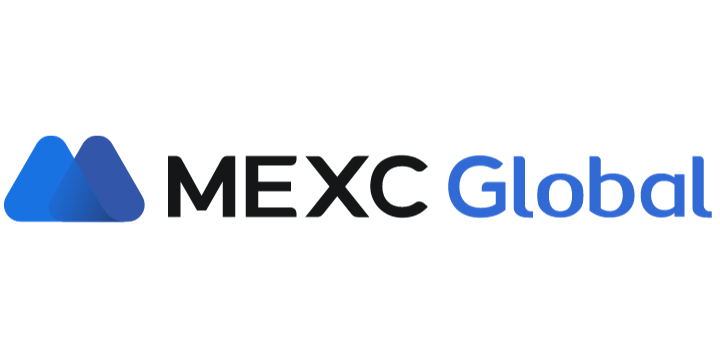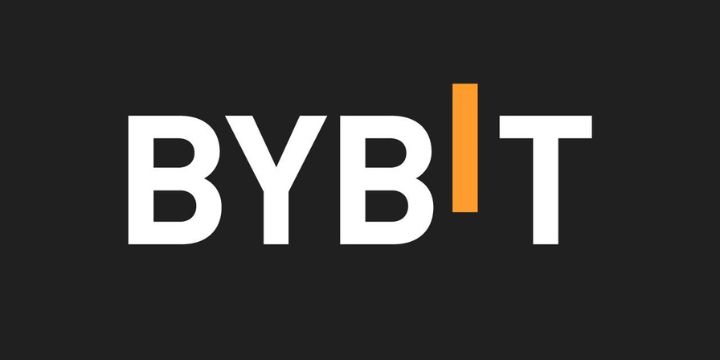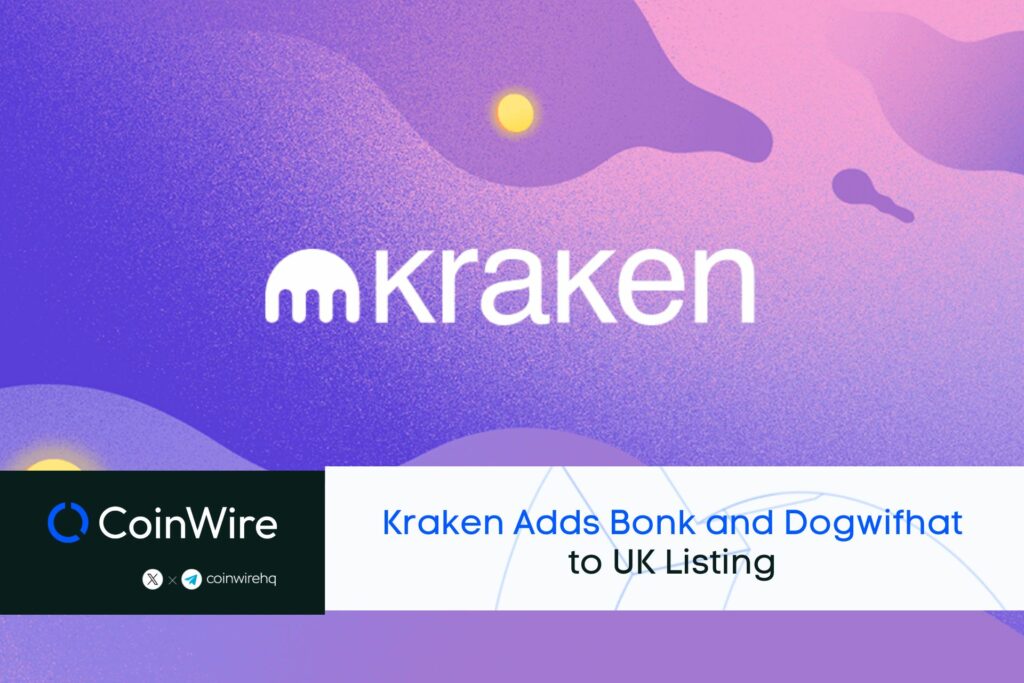Crypto futures trading is a popular way to protect oneself from market fluctuations, increase trading capital with leverage, and earn from both the bear and bull market. But with so many crypto future trading platforms out there, finding the best is always tricky for beginners.
Factors like user-friendliness, fees, security, and the number of supported cryptocurrencies play a considerable role. In this article, we will list and review the best crypto futures exchanges with their pros and cons to help you make informed decisions.
Key Takeaways:
- Crypto futures are contracts that allow traders to invest in agreements to long (buy) or short (sell) cryptocurrencies with significant leverage at a given price and date without actually holding the assets.
- The best crypto futures exchanges for leverage trading are MEXC, Bybit, OKX, Binance, Gate.io, Bitget, and AEVO.
List of the Best Crypto Futures Exchanges
When choosing a crypto futures trading platform, some aspects to consider are the available trading pairs, funding rates, trading fees, trading interface, security, and customer support. Here is the list of the best crypto futures exchanges based on our research:
- MEXC: Best for low fees crypto futures trading
- Bybit: Best crypto futures exchange for beginners
- OKX: Safest exchange for derivatives & margin trading
- Binance: Top futures crypto exchange for experienced traders
- Gate.io: Best for high-leverage trading
- Bitget: Best futures exchange for altcoins
- AEVO: Best decentralized perpetual exchange
Review of Best Crypto Futures Trading Platforms
1. MEXC
![Best Crypto Futures Exchanges for Trading (Updated in [currentyear]) 4 What Is Mexc](https://coinwire.com/wp-content/uploads/2023/10/what-is-mexc-1024x563.jpg)
MEXC is the best choice for crypto futures trading, as it offers high leverage, low fees, and a wide variety of cryptos. It provides various financial derivatives, such as perpetual futures, leveraged ETFs, and index ETFs. You can trade contracts with up to 200x leverage.
MEXC Futures supports both USDT-M and COIN-M perpetual futures, which use USDT and crypto as the collateral, respectively. The platform has a secure, stable, and high-performance system architecture, with a matching engine technology of up to 1.4 million orders/second.
This crypto exchange also provides fair and transparent prices, robust market depth, and smooth handling under extreme market conditions to avoid accidental liquidation. You can access real-time data, futures trading positions, long/short ratios, and liquidation prices. In the futures market, you can change the leverage and margin mode (isolated or cross) according to your risk preference and trading strategy.
Pros of MEXC
- MEXC has a large selection of over 1,700 crypto assets, including emerging and innovative projects from DeFi, NFT, AI, and more.
- It is also a zero-fee exchange for spot traders and offers many other trading options, such as margin, P2P, and demo trading.
- MEXC has a native token called MX, which gives users perks for holding, such as lower fees, voting rights, airdrops, and dividends.
- The platform has a reliable customer service team offers live chat and email support in different languages.
Cons of MEXC
- The number of supported fiat currencies is limited.
- MEXC supports many shitcoins, which may have liquidity issues and can result in price slippage for large orders.
MEXC Futures Trading Fees
The trading fees for MEXC Futures are competitive now, with 0% maker fee and a 0.02% taker fee. You can get an additional 10% discount using an MX token or using our MEXC referral code “mexc-futurexchan“.
2. Bybit
![Best Crypto Futures Exchanges for Trading (Updated in [currentyear]) 5 What-Is-Bybit](https://coinwire.com/wp-content/uploads/2023/10/what-is-bybit-1024x367.png)
Bybit is another top crypto leverage trading platform. It also offers many trading markets, such as spot, margin, lending, and options trading. You can also stake, copy trade, use trading bot, ByStarter, and Bybit Web3 portal.
Bybit’s futures trading has different kinds of contracts, such as USDT-settled, USDC-settled, and inverse contracts. USDT perpetual contracts use USDT, a stablecoin, for margin and settlement. USDC contracts use USDC stablecoin for settlement, and inverse perpetual contracts use the crypto for margin and settlement, like BTC or ETH. Also, perpetual contracts have no expiry date and follow the spot price.
This trading platform offers up to 100x leverage for BTC and ETH trading pairs and up to 20x for other altcoins. Bybit supports more than 915 coins on its platform, with a daily trading volume of over $20 billion. This crypto exchange also provides a beginner-friendly trading interface and a mobile app for both Android and iOS devices. Additionally, Bybit offers an API for developers and traders who want to use third-party automated trading bots such as 3Commas and Cryptohopper.
Pros of Bybit
- Bybit provides a crypto copy trading portal where you can easily copy the trading strategies of other top expert traders.
- Bybit has a crypto debit card that lets users convert and use their crypto worldwide and pay for things at millions of places that accept Visa.
- With “ByStarter”, users can invest in new and promising crypto projects.
- Bybit offers various earning products such as liquidity mining, dual assets, and crypto loans to help users earn passive income.
- Bybit is a secure and compliant cryptocurrency exchange that uses various methods to protect user funds, data, and privacy.
Cons of Bybit
- Bybit does not offer trading to users in some countries, including the United States, the United Kingdom, mainland China, Singapore, Canada, and more (check full list).
Bybit Futures Trading Fees
The Bybit futures trading fees depend on the contract, the volume, and the VIP level. The standard trading fee is 0.02% (marker) and 0.055% (the taker). Higher VIP levels have lower fees. For example, VIP5 users pay a 0.01% maker fee and a 0.032% taker fee.
To get lower trading fees, you can also use our referral code “FUTUREXCHANG”, the code will reduce %10 of your trading fees and support us to generate more useful content.
3. OKX
![Best Crypto Futures Exchanges for Trading (Updated in [currentyear]) 6 Okx-Overview](https://coinwire.com/wp-content/uploads/2023/07/okx-overview-1024x551.png)
OKX is a top-notch crypto futures exchange that offers a wide range of futures contracts for various cryptocurrencies. It handles over $10 billion daily trading volume in the derivatives market, with high liquidity and fair prices. OKX supports futures contracts that expire weekly, biweekly, and quarterly.
OKX also offers two types of futures contracts: crypto and USDT margin. This future trading platform provides a maximum leverage of 125X for futures trading, a maintenance margin system to prevent liquidation, and a user-friendly interface that allows investors to trade digital assets efficiently.
OKX provides trading data, market depth, order book, trading bots, and trading charts for investors to analyze the market and find their best trading opportunities.OKX is regulated in the Bahamas and Dubai, this exchange also complies with the highest security and compliance standards to prove that it’s a trustworthy and secure crypto futures exchange with a strong industry reputation.
Pros of OKX
- OKX supports over 323 crypto coins and almost 30 fiat currencies on OKX.
- It supports different derivatives products, such as futures, perpetual swaps, options, and leveraged tokens.
- It allows you to make passive income from your crypto assets by staking and lending them.
- You can also copy the strategies of successful traders with the copy trading feature.
- OKX has a 24/7 customer support team can assist investors with any issues or queries.
Cons of OKX
- OKX does not serve US-based customers because of regulatory issues.
- It does not offer a fiat offramp in many countries, meaning you may be unable to withdraw fiat currencies to your bank account.
OKX Futures Trading Fees
The OKX futures maker fee is 0.02%, and the taker fee is 0.05%. You can get additional fee discounts based on OKB holdings and 30-day trading volume.
4. Binance
![Best Crypto Futures Exchanges for Trading (Updated in [currentyear]) 7 Binance Future Trading](https://coinwire.com/wp-content/uploads/2023/11/binance-future-trading-1024x577.jpg)
Binance is another crypto futures trading exchange that you should take into consideration. This is a secure and one of the biggest crypto exchanges by volume and liquidity. Binance owns a high level of security and compliance, with many layers of protection and an insurance fund called ‘SAFU” (Secure Asset Fund for Users). Otherwise, this platform also has a risk warning system and proof of reserves for more transparency.
With Binance, you can trade over 350 coins on the spot market and over 90 contracts on the futures market with up to 125x leverage with USDT or coin-margined contracts. Binance also supports grid trading bots for automated futures trading. Grid trading bots let you buy low and sell high, making your trading easier with full automation.
Binance can handle over 100,000 orders per second, with only a 5-millisecond delay in futures trading. This crypto exchange has a simple and user-friendly interface, where you can trade on Binance futures from your phone, the desktop app, or the web browser.
Pros of Binance
- Binance offers many trading options and order types, such as P2P, spot, margin, futures, options, and more.
- Binance has a web3 multi-currency wallet that allows cross-chain swaps.
- Users can make passive income by staking (both fixed and flexible staking) their crypto assets on Binance.
- Binance supplies many educational resources that cover topics like blockchain, cryptocurrency, trading, security, and more, and also has high-quality research reports.
Cons of Binance
- U.S. dollars (USD) are not supported for deposits and withdrawals. Users must use a third-party service or a stablecoin to change their USD to crypto and vice versa.
- It has a separate platform for US users called “Binance.US” but Binance US currently does not offer futures trading.
Binance Futures Trading Fees
The USD-M and Coin-M futures have a base fee of 0.02% for makers and 0.05% for takers. This Binance futures fee can be lowered by up to 75% with BNB rebates and VIP rewards.
5. Gate.io
![Best Crypto Futures Exchanges for Trading (Updated in [currentyear]) 8 Gateio Future Trading](https://coinwire.com/wp-content/uploads/2023/11/gateio-future-trading-1024x442.jpg)
Gate.io is an altcoin crypto exchange that started in 2013 with many trading services, such as spot, margin, futures, and options. It has two kinds of futures contracts: USDT-margined and BTC-margined. This platform offers many features and tools for futures trading, such as stop-limit orders, trailing stop orders, and TradingView charts.
This could be seen as an ideal exchange for futures copy trading. You can copy the best traders and automate their crypto trading strategies. The platform also supports futures grid trading using trading bots. Additionally, you can create, store, and exchange NFTs there. It also provides various Web3 features like wallets, cross-chain swaps, and DApps.
Pros of Gate.io
- You can trade over 1,700 coins and tokens, including BTC, ETH, and many other new altcoins.
- Users can earn extra money by using crypto interest-earning products such as HODL & earn, crypto staking, and DeFi mining.
- Earn interest on your idle crypto assets by lending them to other users.
- Gate.io offers a secure way to spend crypto online or in-store worldwide through their new “Visa” debit card.
- It provides cloud mining services to mine cryptocurrency without buying hardware.
Cons of Gate.io
- Gate.io does not support fiat withdrawals. You can only withdraw your money in crypto, which means you have to use another platform or service to change your crypto to fiat.
Gate.io Futures Trading Fees
The basic Gate.io futures fees are 0.015% for makers and 0.05% for takers, but it can be reduced by using Gate.io (GT) points.
6. Bitget
![Best Crypto Futures Exchanges for Trading (Updated in [currentyear]) 9 Bitget Future Trading](https://coinwire.com/wp-content/uploads/2023/11/bitget-future-trading-1024x395.png)
Bitget is a global crypto exchange and Web3 company that provides spot, futures, margin trading, bots, APIs, launchpad, and Web3 wallet services. This futures trading platform supports over 550 cryptocurrencies, including Bitcoin, Ethereum, and altcoins. Bitget has over 20 million registered users from over 100 countries and regions.
Currently, Bitget enables users to trade futures contracts with up to 125x leverage. Similar to other exchanges, Bitget has two types of futures contracts: USDT-M, USDC-M, and Coin-M. This crypto exchange also has various order types, such as limit, market, stop-limit, and trigger orders, to cater to different trading styles and risk levels.
Bitget’s futures trading service is also known for its high liquidity, competitive fees, fast order execution, and strong security. It executes orders within 10 milliseconds and supports a peak trading volume of 20 billion USD daily. This futures trading platform also uses security measures like cold wallets, multi-signature, SSL encryption, and anti-DDoS protection to protect users’ assets and data.
Pros of Bitget
- Biget offers competitive fees for both spot and futures trading, and users who hold BGB (Bitget’s native token) can get additional discounts.
- Bitget has a dedicated copy trading market, which lets beginners follow the strategies of expert traders and earn passive income.
- This platform offers many trading bots, such as spot and futures grid bots, martingale, and DCA.
Cons of Bitget
- Bitget does not support many fiat currencies or payment methods, users may have to use third-party services to deposit or withdraw funds.
- It is inaccessible in some countries, like the United States, Canada, Singapore, and China.
Bitget Futures Trading Fees
Bitget charges a 0.02% maker and 0.06% taker futures trading fee. There are more VIP perks (low fees, account manager, higher yields, etc.) for users with a monthly volume of more than $10 million.
7. AEVO
![Best Crypto Futures Exchanges for Trading (Updated in [currentyear]) 10 Aevo On Binance Launchpool](https://coinwire.com/wp-content/uploads/2024/03/aevo-on-binance-launchpool-1024x576.jpg)
Aevo is a layer-2 Ethereum optimistic roll-up based on the OP Stack, enhancing transaction efficiency, complemented by a cloud-hosted sequencer operated by Conduit. This crypto futures trading platform is underscored by its impressive weekly trading volume, which has soared past $50 million. Additionally, the platform’s ability to process nearly 5000 transactions per second, thanks to its custom EVM roll-up built with the Optimism SDK, positions it as a formidable player in the options trading space.
Aevo’s innovative approach, such as pre-market trading offerings for its token before an airdrop, yield-bearing deposits, and integration with Ribbon yield strategies, demonstrates a commitment to engaging its community and traders.
To start trading on AEVO, you can connect your wallet to the AEVO official website using MetaMask, Coinbase Wallet or WalletConnect. You can also see your positions, orders, balances, and trading history. Therefore, AEVO is one of the best crypto futures exchanges because it has the advantages of decentralization, scalability, and security.
Pros of AEVO
- AEVO is a DEX, meaning users can trade without a middleman (no risk of market manipulation).
- AEVO offers “low price slippage” when users open and close trades, which means users can get the best deal for each transaction.
- AEVO works on low-fee networks like Optimism and Arbitrum, which cut down gas costs.
- AEVO provides an off-chain order book for the trading system, with all trades settled on layer-2, ensuring a non-custodial and secure trading process.
- AEVO offers pre-market trading for many tokens, allowing traders to take positions on the token’s future price
Cons of AEVO
- It has a smaller asset pool than other popular spot trading DEXs like Uniswap and Pancakeswap.
- Users need a compatible wallet like MetaMask, which might be a problem for beginners who are unfamiliar with the crypto dapps.
AEVO Trading Fees
AEVO has variable trading fees depending on the type of trading, including option trading fees, PERPS trading fees, PRE-Launch futures, settlement fees, and liquidation fees. The table below is the details of AEVO’s current trading fee:
| Option Trading fees | PERPS Trading fees | PRE-Launch Futures | Settlement fees | Liquidation fees | |
| Taker fees | 0.05% of the notional | 0.08% of the notional | 0.25% of the notional | 0.015% | 0.5% |
| Maker fees | 0.03% of the notional | 0.05% of the notional | -0.10% (rebate) of the notional | 0.015% | 0.5% |
(Update: Binance will list AEVO at 2024-03-13 10:00 (UTC) as their 48th Project Launchpool. Join Binance Community Now for the latest updates)
Best Crypto Futures Trading Platform Compared
| Supported Coins | Futures Fees | Maximum Leverage | |
| MEXC | 1720 | Maker: 0%Taker: 0.02% | 200x |
| Bybit | 915 | Maker: 0.02%Taker: 0.055% | 100x |
| OKX | 323 | Maker: 0.02%Taker: 0.05% | 125x |
| Binance | 350 | Maker: 0.02%Taker: 0.05% | 125x |
| Gate.io | 1700 | Maker: 0.015%Taker: 0.055% | 100x |
| Bitget | 550 | Maker: 0.02%Taker: 0.06% | 125x |
| AEVO | BTC, ETH, AVAX and more | Up to 0.5% | 20x |
What is Crypto Futures Trading?
Crypto futures trading is like investing in the future price of digital currencies, such as Bitcoin or Ethereum. Instead of buying and owning the actual coins, you predict the future price of the cryptos.
There are two main types of trading in crypto futures: isolated margin and cross margin. Margin is the money that you put in to open a leveraged position. Leverage is the ratio of the position size to the margin. For example, if you put in $1000 as a margin and use 10x leverage, the position size will be $10,000.
- Isolated margin is a type where you set the margin for each position or trading pair. You can choose how much margin to use for each position, and the liquidation risk is only for the margin you used.
- Cross margin is where you use the whole “account balance” as a margin. You share the margin among all open positions in the account. The profit or loss from one trading can affect the margin level of the other trading.
What are Crypto Futures Funding Rates?
Crypto futures funding rates are fees that traders pay or receive periodically (generally every 8 hours) in futures contracts to ensure the contract’s price stays close to the actual spot price of the cryptocurrency.
Let’s break it down:
When you trade futures, the contract’s price might slightly differ from the actual price of the cryptocurrency at that moment. To keep things aligned, funding rates kick in. If the futures price is higher than the spot price, traders who are opening a long position “pay a fee”. Conversely, if the futures price is below the spot price, traders opening a short position “receive a fee”.
Conclusion
Regarding the best crypto futures exchange, several factors come into play: fees, security, ease of use, and available features. MEXC, Bybit, OKX, Binance, and Gate.io are the best crypto futures trading exchanges catering to beginners and experienced traders.
But you should always do your own research and be careful before trading crypto futures. Crypto futures are very risky and volatile, so you should only participate in crypto futures trading with what you can lose.
FAQs
What is the lowest fee crypto exchange futures?
MEXC is a crypto exchange platform offering the lowest futures contract trading fees. It charges 0% maker and 0.02% taker fee only. This is lower than many other popular crypto exchanges, such as Binance, Bybit, and OKX.
Which app is best for crypto future trading?
MEXC is one of the best apps for trading crypto futures contracts due to its low-fee trading and wide range (over 1720) of supported coins.
How do I choose crypto for futures trading?
Choosing a crypto for futures trading depends on your risk appetite, strategy, and market conditions. Some factors to consider are:
- Liquidity: Higher liquidity means lower slippage and tighter spreads, which can reduce your trading costs and improve your execution.
- Volatility: Higher volatility means higher potential returns but also higher risks too.
- Fundamentals: The underlying value and potential of a crypto based on its technology, adoption, innovation, and regulation. Strong fundamentals can indicate a long-term growth potential.
How do I start to trade crypto futures?
To start trading crypto futures, you need to follow these steps:
- Choose a crypto futures trading app, such as MEXC, Binance, Bitget, or OKX.
- Open an account with the crypto exchange and verify your identity and address (if required).
- Deposit funds into your account using fiat currency or crypto.
- Choose a futures contract that suits your trading objectives and risk profile. You can choose between perpetual contracts and fixed-term contracts.
- Place an order to buy/long or sell/short. You can use market orders or limit orders, and set stop-loss orders or take-profit orders to manage your risk and reward.
![Best Crypto Futures Exchanges for Trading (Updated in [currentyear]) 1 Best Crypto Futures Exchanges Featured Image](https://coinwire.com/wp-content/uploads/2023/11/best-crypto-futures-exchanges-featured-image.jpg)


![Bybit Review [currentyear]: Exchange Features, Fee, Pros and Cons 29 Bybit Featured Image](https://coinwire.com/wp-content/uploads/2022/06/Bybit-review-1024x683.png)


![MoonPay Review ([currentyear]): Fees, Pros & Cons, and Sign-Up Guide. 32 Moonpay Review Featured Image](https://coinwire.com/wp-content/uploads/2023/09/moonpay-review-featured-image-1024x683.jpg)
![Binance Futures Quiz Answers (Updated in [currentmonth] [currentyear]) 33 Binance Futures Quiz Answers Featured Image](https://coinwire.com/wp-content/uploads/2022/12/binance-futures-quiz-answers-1024x683.png)